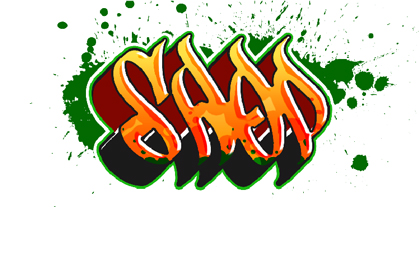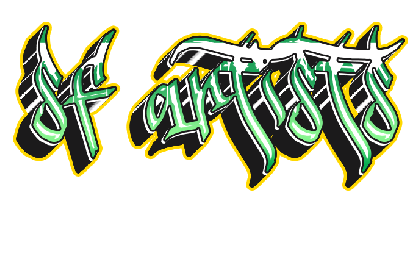The Legends of Spray: Unmasking the Most Famous Graffiti Crews That Changed Street Art Forever
Graffiti, once dismissed as mere vandalism, has risen to a place where it influences everything from advertising to fine art. Over the decades, crews of artists have banded together, pushing styles, boundaries, and entire cityscapes to new visual frontiers. Some groups have left their mark not just on concrete but on culture itself, transforming urban landscapes into open-air galleries that speak to the struggles, dreams, and creative spirit of communities worldwide.
The journey from illicit tags on subway cars to commissioned murals on corporate buildings represents one of the most remarkable artistic evolutions of the modern era. At the heart of this transformation are the graffiti crews—collectives of like-minded artists who shared techniques, protected one another, and collectively pushed the boundaries of what was possible with spray paint and imagination.
These crews didn’t just create art; they forged identities, established territories, and built communities. They turned neglected urban spaces into vibrant expressions of creativity and resistance. Through their collective efforts, they elevated graffiti from simple signatures to complex artistic statements that demanded attention and, eventually, respect from the art world and beyond.
This article delves into the world of the most famous and influential graffiti crews—from the pioneers who painted New York’s subway cars in the dead of night to global collectives whose work spans continents. We’ll explore how these legendary groups transformed not just walls but the very definition of public art, leaving an indelible mark on our visual culture and inspiring generations of artists to come.
As we unmask these legends, we’ll discover how their bold expressions, intricate designs, and provocative messages challenged the status quo and elevated graffiti from criminalized activity to a respected art form. Through tales of personal struggle and collective identity, we’ll uncover the mythos surrounding these artists and their profound impact on society, revealing how they shattered boundaries and ignited a movement that continues to thrive today.
The Origins and Evolution of Graffiti Culture
To understand the profound impact of the most famous graffiti crews, it’s essential to trace the origins of graffiti and street art. Graffiti, as a form of expression, has ancient roots, with the earliest examples dating back to the Roman Empire and Ancient Egypt. These early forms of graffiti comprised inscriptions and simple drawings etched on walls and monuments, conveying messages, marking territory, or recording events. Throughout history, humans have felt the primal urge to leave their mark, to declare “I was here” on the physical world around them.
However, the modern graffiti movement began to take shape in the late 1960s and early 1970s in urban environments, particularly in New York City. The birth of modern graffiti is often attributed to teenagers in Philadelphia and New York City, who began tagging their names or pseudonyms on subway cars and buildings. These tags were simple, but they represented a form of identity and presence in a city where many felt invisible. The act of tagging quickly evolved into more elaborate and artistic expressions, with writers competing to create more intricate and colorful designs.
One of the earliest recognized graffiti writers was TAKI 183, a young man from Washington Heights who worked as a messenger, traveling throughout New York City. His simple tag—his nickname followed by his street number—began appearing across the five boroughs, catching the attention of The New York Times, which published an article about him in 1971. This media coverage helped legitimize graffiti as a form of expression and inspired countless others to follow in his footsteps.
As the movement grew, so did the complexity and artistry of the work. What began as simple signatures evolved into elaborate pieces with complex color schemes, characters, and themes. The competitive nature of graffiti culture drove innovation, as artists sought to outdo one another with more impressive and technically challenging works. This evolution marked the transition from mere vandalism to a recognized art form, as these artists began to develop unique styles and techniques.
The formation of graffiti crews was a natural progression in this evolution. These collectives emerged from a need for camaraderie, protection, and inspiration in an often hostile urban environment. In cities like New York, Paris, London, Berlin, São Paulo, and Buenos Aires, crews developed identities as strong as their tags. They competed for visibility, respect, and infamy.
Crews served a variety of functions:
- Protecting members from rival artists and sometimes law enforcement
- Sharing techniques and artistic knowledge
- Coordinating large, ambitious murals or bombing sprees
- Establishing territory in the dense visual jungle of city streets
- Providing a sense of belonging and identity for young artists
The 1970s and 80s saw the rise of names like The Fabulous Five, United Graffiti Artists, and Rock Steady Crew, who would cross over between graffiti and hip hop, dance, and street fashion. These early crews laid the groundwork for what would become a global artistic movement.
As graffiti grew in popularity, it also became a form of social commentary. Artists used their work to address issues such as poverty, racism, and political corruption, making graffiti a powerful tool for marginalized communities to voice their grievances. The streets became a canvas for stories that were often ignored by mainstream media, and graffiti crews formed as collectives of like-minded individuals who shared a common vision.
The transition from illegal to legitimate art form was not without struggle. Throughout the 1980s and 1990s, cities around the world implemented aggressive anti-graffiti campaigns. New York City’s Metropolitan Transportation Authority spent millions on cleaning subway cars, while Mayor Ed Koch implemented harsh penalties for graffiti writers. This crackdown forced many artists to adapt their approach, moving from trains to walls and eventually to canvases and galleries.
Despite these challenges, or perhaps because of them, graffiti continued to evolve and gain recognition as a legitimate art form. Pioneering artists like Jean-Michel Basquiat and Keith Haring, who had roots in street art, found success in the traditional art world, helping to bridge the gap between the streets and galleries. Their success paved the way for future generations of graffiti artists to gain recognition and respect from the art establishment.
Today, graffiti and street art have become integral parts of urban landscapes worldwide. What began as an underground movement has evolved into a global visual language, with the pioneering crews serving as its original architects. Their influence extends far beyond the specific pieces they created, shaping how subsequent generations understand concepts of public space, artistic expression, and urban identity.
New York: The Birthplace of Modern Graffiti
New York City stands as the undisputed birthplace of modern graffiti culture, with its subway system serving as the original canvas for what would become a global phenomenon. The city’s unique combination of dense urban environments, diverse communities, and economic challenges created the perfect conditions for graffiti to flourish. What began in the tunnels and train yards of the five boroughs would eventually spread worldwide, transforming urban landscapes and challenging conventional notions of art and public space.
Early Pioneers and the Subway Era
Before discussing specific crews, it’s important to acknowledge pioneering figures like TAKI 183, whose simple tags helped spark the movement that would eventually give rise to organized crews. These early writers laid the groundwork for what would become a rich and complex artistic tradition. As the 1970s progressed, the competition for visibility and recognition intensified, leading writers to develop more elaborate styles and form alliances that would evolve into the first graffiti crews.
The subway system became the primary canvas for these early artists, with trains serving as moving galleries that carried their work throughout the city. The appeal was obvious—a piece painted on a subway car could be seen by thousands of people as it traveled through different neighborhoods. This visibility was crucial for artists seeking recognition, and the most prolific writers gained legendary status within the community.
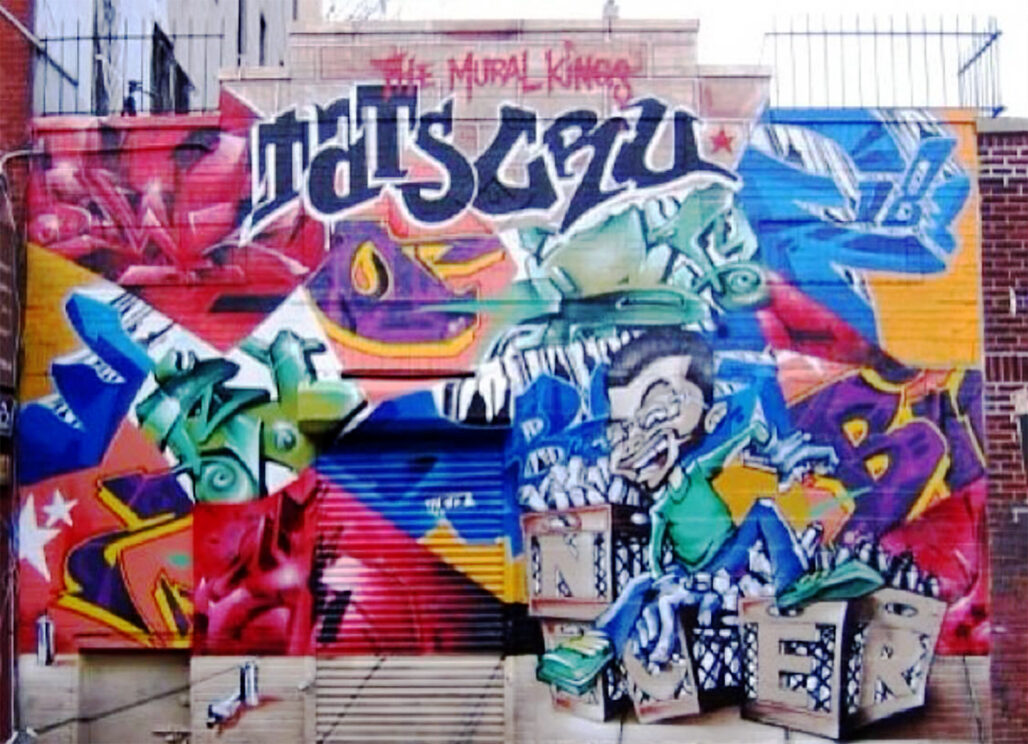
TATS CRU: The Transformation from Outlaws to Icons
Among the many crews that emerged from New York’s graffiti scene, one name stands tall: the legendary TATS CRU. Originating from the streets of the South Bronx in the 1980s, their transformation from local bombers to muralists sought by global brands is a story that blends grit, vision, and relentless creativity.
Origins and Founding Members
TATS CRU was born in the South Bronx during the 1980s. Early members—BIO, BG 183, and Nicer—started painting trains and handball courts, creating bold works on subway cars that zipped across the city. Their original name, “The Artists That Share,” reflected a commitment to growth and collective development. This philosophy would serve them well as they navigated the changing landscape of graffiti culture.
The crew emerged during a pivotal time in New York’s history. The Bronx was struggling with economic hardship, urban decay, and social challenges. Against this backdrop, TATS CRU used their art not just as self-expression, but as a way to bring color and life to neglected neighborhoods. Their early work reflected both the struggles and the resilience of their community.
Evolution from Trains to Legal Murals
What separates TATS CRU from many of their contemporaries is both their technical skill and their refusal to settle. As New York’s anti-graffiti campaigns cracked down in the late 1980s and early 1990s, TATS CRU evolved, shifting their art from trains to walls, and ultimately to legal commissions. This transition wasn’t just about avoiding legal trouble—it represented a strategic evolution that would allow them to develop their art while building sustainable careers.
The crew recognized that the era of subway graffiti was coming to an end and made a conscious decision to adapt rather than fade away. They began focusing on wall pieces, particularly in their home borough of the Bronx, where they created memorial murals for community members who had passed away. These pieces earned them respect not just from other artists but from local residents who saw the value in their work.
Commercial Success and Mainstream Acceptance
As their reputation grew, so did the opportunities available to them. Their portfolio expanded to include:
- Tributes and vibrant murals in local neighborhoods
- Advertising for giants like Coca-Cola and Sony
- International projects in Japan, Europe, and Latin America
- Collaborations with celebrities and other artists
The shift from the shadows to the spotlight did not dilute their edge. Brands approached TATS CRU not just for mural execution but also for the authenticity and subcultural credibility they brought. When a campaign used their work, it signaled “real New York,” street energy, and genuine artistry.
Celebrities and filmmakers also took notice. The crew’s murals appear in music videos, films, and album covers. Collaborations with musicians—including Nas and Missy Elliott—and appearances in documentaries helped bridge the gap between street art and mainstream pop culture.
Artistic Innovations and Signature Styles
TATS CRU popularized the use of wildstyle, a complex form of lettering that looks almost indecipherable to most viewers. They also mastered photorealistic elements, blending vibrant color with 3D shapes, portraits, and cityscapes. Their ability to integrate these techniques side-by-side in massive murals has inspired countless artists.
Their technical innovations weren’t limited to aesthetics. The crew also pioneered new approaches to working with spray paint, developing techniques that allowed for greater precision and detail. They experimented with different caps, pressure levels, and paint formulations, pushing the boundaries of what was possible with their chosen medium.
Educational Outreach and Community Impact
Knowing the power of their platform, TATS CRU invests in education. They run workshops, mentor emerging artists, and help local organizations harness graffiti as a tool for empowerment rather than rebellion. Their outreach efforts break down the myth that street art only belongs outside the law.
TATS CRU murals often serve as visual anchors in neighborhoods, places where people feel pride in their local identity. Every wall becomes a mix of public service, activism, and creative expression. Their work has transformed the visual landscape of the Bronx and beyond, bringing color and inspiration to historically overlooked communities.
Wild Style and the Development of Complex Lettering
The Wild Style crew, immortalized in the 1983 film of the same name, represents one of the most influential collectives in graffiti history. The crew and the artistic style they championed (characterized by intricate, interlocking letters) became synonymous with the golden age of New York graffiti. Members like Lee Quiñones helped elevate graffiti from simple tagging to complex artistic expression.
The Wild Style movement transcended mere crew status to become a defining aesthetic in graffiti culture, influencing generations of artists worldwide. Their approach to letter forms and composition created a visual language that remains central to graffiti art. The complexity and dynamism of Wild Style lettering pushed graffiti into new artistic territory, demanding technical skill and creative vision that elevated the art form.
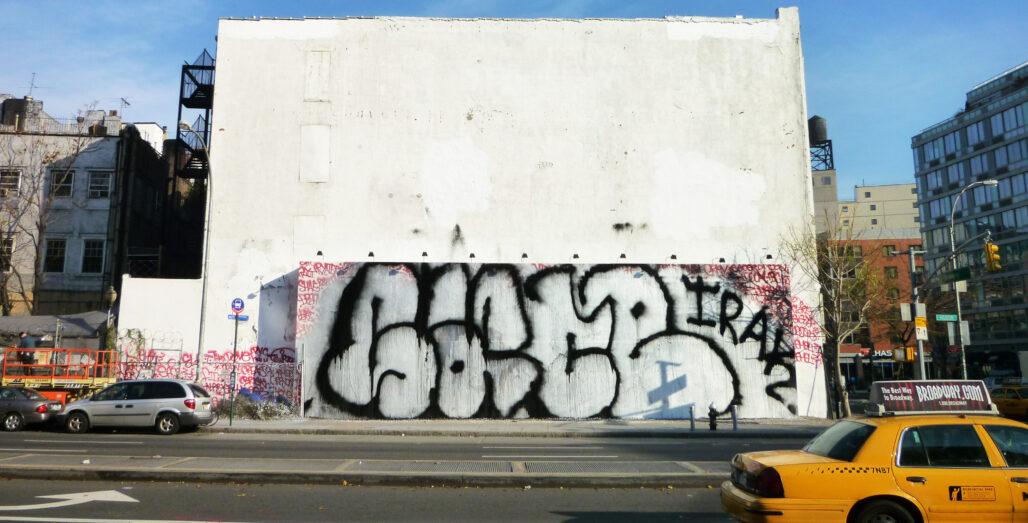
IRAK Crew and Downtown Manhattan Culture
Perhaps one of the most legendary graffiti crews to emerge from downtown New York is IRAK. Founded by Kunle Martins (known as EARSNOT) in the late 1990s, IRAK became not just a graffiti crew but a revolutionary force in downtown Manhattan culture. As described in GQ magazine, they were “a syndicate of street artists who became a family, and a revolutionary force in the world below 14th Street.”
What distinguished IRAK was their integration into the broader cultural landscape of New York. The crew included members who would go on to become world-famous artists, including Ryan McGinley, Dan Colen, and Dash Snow. Their influence extended beyond graffiti into art, fashion, and downtown culture, creating a legacy that continues to resonate decades later.
IRAK represented a new generation of graffiti artists who were as comfortable in galleries as they were on the streets. They blurred the lines between different creative disciplines, helping to further legitimize graffiti as a valid form of artistic expression. Their story illustrates how graffiti crews could function not just as artistic collectives but as cultural incubators that nurtured diverse forms of creativity.
TC5 and RTW: Defining the Golden Age of Subway Graffiti
TC5, standing for either “The Cool Five” or “The Crazy Five” depending on the era, was one of the most prominent crews of the 1970s and 1980s. Operating primarily on the New York subway system, TC5 members were known for their whole-car masterpieces and technical innovation. Their work helped define the aesthetic of the golden age of subway graffiti.
Similarly, RTW, which stood for either “Rolling Thunder Writers” or “Rock The World,” was another influential crew from the early days of New York graffiti. They were known for their bold style and prolific output, helping to establish many of the conventions that would define graffiti art for decades to come.
These crews operated during what many consider the golden age of New York graffiti, when the subway system was transformed into a moving art gallery. Their work represented the height of subway graffiti before the city’s crackdown in the mid-1980s forced artists to find new canvases. The technical innovations, stylistic developments, and cultural impact of crews like TC5 and RTW laid the groundwork for everything that would follow in graffiti culture.
New York’s pioneering graffiti crews didn’t just create art—they created a movement. Their influence spread far beyond the five boroughs, inspiring artists around the world to pick up spray cans and transform their own urban environments. The legacy of these New York crews can be seen in every city where graffiti has taken root, a testament to the power of their artistic vision and cultural impact.
Global Expansion: Famous Crews Beyond New York
While New York remains the spiritual home of graffiti culture, influential crews emerged in other cities as well, taking the art form in new directions and establishing their own distinctive approaches. As graffiti spread globally, these crews adapted the foundations laid in New York to their local contexts, creating regional styles and pushing the boundaries of what was possible with spray paint and public space.
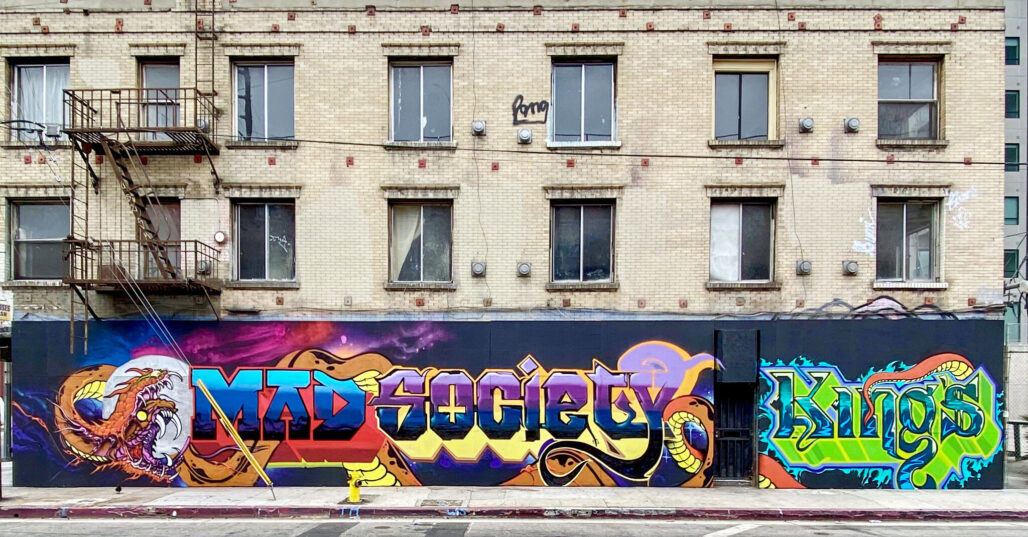
MSK (Mad Society Kings)
Based primarily in Los Angeles, MSK (Mad Society Kings) has become one of the most recognized contemporary graffiti crews worldwide. With members including REVOK, RIME, and SABER, MSK has pushed the boundaries of traditional graffiti while maintaining connections to its historical roots.
MSK stands out as one of the most influential collectives in street art history, earning a reputation as the “all-star team” of graffiti. Their legacy is built on relentless innovation, technical mastery, and a dedication to pushing visual boundaries.
Notable MSK members include:
- Saber – Renowned for executing one of the largest graffiti pieces ever on the LA River, Saber’s work is celebrated for its scale and precision. This monumental piece, visible from satellite imagery, demonstrated the ambition and technical skill that defines MSK’s approach.
- Rime – Known for his energetic style, bold color schemes, and dynamic letterforms, Rime has helped redefine what’s possible in modern graffiti. His work combines technical precision with playful creativity.
- Revok—A pioneer in both traditional walls and gallery settings, Revok experiments with textures and mixed-media techniques that have influenced artists worldwide. His transition from illegal graffiti to museum exhibitions exemplifies MSK’s ability to bridge different artistic worlds.
Other heavyweights such as Augor, Pose, Ewok, and Pusher contribute distinct styles, creating a diverse but cohesive team dynamic. This combination of individual talent and collective identity has made MSK a dominant force in contemporary graffiti.
MSK’s impact goes beyond city walls. The crew played a pivotal role during the late ’90s and early 2000s West Coast renaissance, blending aggressive lettering with large-scale productions. Their murals often become city landmarks, inspiring a generation of artists to elevate their craft and break new ground. MSK continues to thrive by adapting to new technologies and collaborating across art forms, cementing its status as a driving force in contemporary graffiti culture.
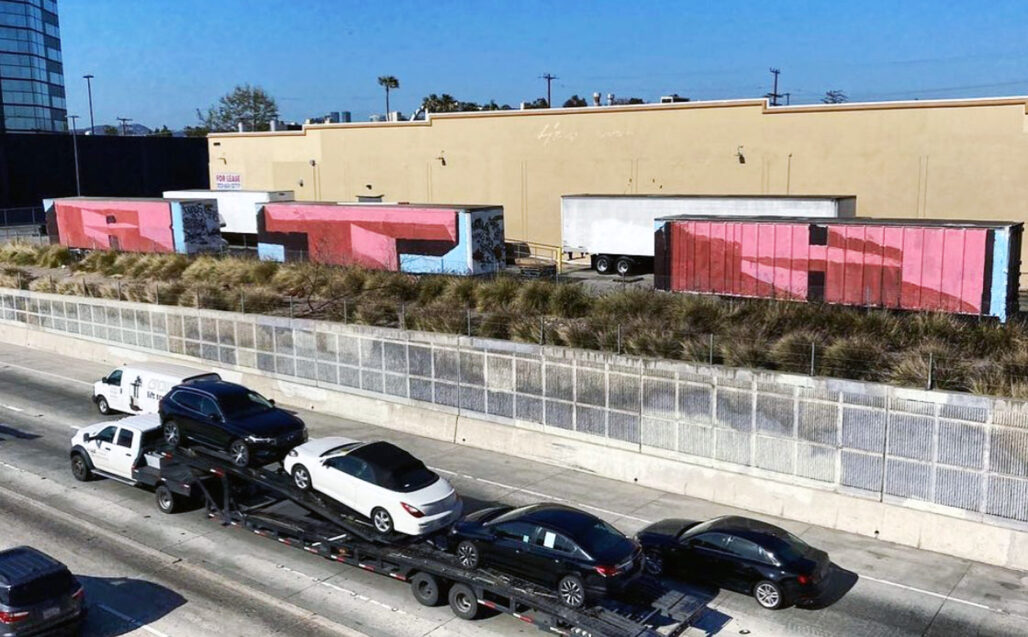
RTH (Rated The Highest): L.A.’s & NYC’s Relentless Street Bombers
Among Los Angeles’ influential graffiti collectives, RTH (Rated The Highest) stands out for their uncompromising approach and widespread impact on the city’s visual landscape. Emerging in the early 2000s, RTH earned a reputation as one of L.A.’s most relentless graffiti crews, with a name that wasn’t just a boast but a statement of their ambition and self-perception.
What distinguished RTH was their all-city mentality taken to the extreme. They didn’t just tag a few neighborhoods—they bombed everywhere, from Highland Park to Hollywood, South Central to the Westside. As one account described it, RTH hits “all nooks and crannies” of L.A., their markings multiplying overnight and overrunning the city. Their approach was less about intricate wildstyle pieces and more about uncomplicated, high-impact hits and rebellious visuals that anyone on the street could recognize.
RTH had also been an established crew in New York for many years prior to the birth of LA’s RTH. The crews later clicked up in the 2010s. LA’s Serch led the forefront on this while making solid connections with NY RTH veterans like Goal, Caspa and Doe. RTH remains a globally recognized crew with reach spanning several continents.
Stylistic Approach and Innovation
RTH made its mark with a gritty, no-apologies style that bridged different eras and techniques. Rooted in aggressive bombing and distinctive handstyles, they weren’t afraid to incorporate elements of emerging street art or utilize any medium necessary to get up. Before the widespread blending of “street art” with traditional graffiti became common, RTH members like Smear were already combining raw tags with bold characters and provocative slogans.
Their versatility was evident in their methods—from scrawling on bus windows to wheatpasting posters and slapping “Hello My Name Is” stickers, RTH members used every available surface and technique to ensure their presence was felt throughout the city. This multimedia approach helped them maintain visibility even as anti-graffiti efforts intensified, allowing them to adapt while staying true to their rebellious ethos.
Key Members and Their Contributions
- Smear– Founder and one of L.A.’s most notorious taggers of all time, Smear started writing in 1989 and became revered as “one of the most intelligent, well-read, grimiest street tagging kings” in the game. His signature style featured uncomplicated, high-visibility lettering with dripping elements and bold characters, like his famous “Liquor Face” icon. Smear’s influence was so significant that he became the target of a famous graffiti injunction in the late 2000s, highlighting both his impact and the authorities’ recognition of his work.
- Indoe – The other co-founder and a veteran of the crew’s 1990s origins, Indoe was the quiet backbone of RTH’s early reign. In 2005, he and Smear launched the Street-Fame forum to connect writers, demonstrating their commitment to building community beyond just painting walls. Known for his wicked handstyle, Indoe helped set the standard for what it meant to be “Rated The Highest” from day one.
- Serch (Eric “King Serch” Ginsburg) – The undisputed “Sticker King” of Los Angeles, Serch bombed the city for over two decades, specializing in slap tags and stickers that plastered every street sign and utility box. He basically sparked L.A.’s sticker-tag revolution, proving that a simple sticker slapped in the right spot could hit as hard as a burner. Serch remained active well into the 2010s before his passing in 2017, leaving behind a legacy that continues to influence how artists approach non-traditional graffiti media.
- Dekaf, known for aggressive get-ups on L.A. freeways.
- Rekoil, whose influence extended to inspiring artists from L.A. to the Bay Area.
- Tuner, recognized for clean, stylish letter work on walls and even box trucks.
- Branded (Brand One), who brought an artistic twist to the crew’s mayhem through wheatpaste posters and gallery work.
The crew also included Bot, known for funky throw-ups sometimes accompanied by robot doodles; Derect, respected for his fast, flowing handstyle; Dwel, who brought a heavy letter style from freight tagging; React, known for quick two-color throw-ups; and Lukas, who brought a street artist’s eye to letterforms.
Fallen Members and Their Legacy
The crew has suffered losses over the years, with members like Ovius, known for his bold, blocky handstyle; Akayo (Shawn Whisenant), a prolific sticker fiend and zine maker who became part of the Bay Area art movement; Ratzoh, the self-proclaimed “King of Characters” known for his wicked graffiti characters; Tame – a real renegade tagging hooligan in every sense of the word, known for his bombing styles and massive imprint on the city of LA, Boost, one of RTH’s original bombers; Acroh, a veteran writer from the early ’90s. These fallen writers are remembered and honored within the graffiti community, their names living on through tribute pieces and stories shared by surviving members.
Legacy and Cultural Impact
RTH’s influence on Los Angeles graffiti culture cannot be overstated. They helped shape the city’s visual identity during the 1990s and 2000s, pushing an all-city mentality with a punk attitude that inspired countless younger artists. Their work represented a bridge between old-school bombing and emerging street art sensibilities, demonstrating how graffiti could evolve while maintaining its rebellious core.
RTH’s legacy continues to resonate in Los Angeles and beyond, representing a crew that refused to compromise, embraced every medium available, and transformed the city’s streets into their personal canvas. Their story exemplifies how a dedicated collective can leave an indelible mark on urban culture through sheer persistence, creativity, and an unwavering commitment to being seen on their own terms.
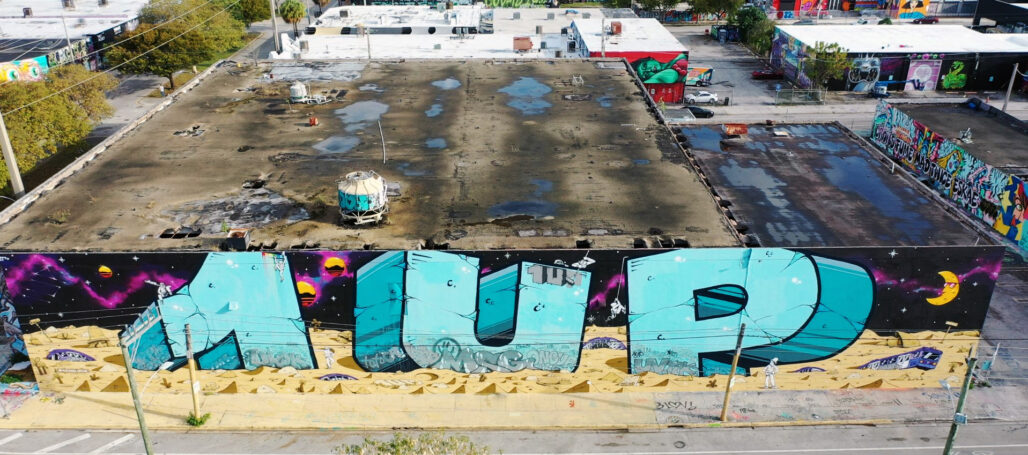
1UP (One United Power)
The 1UP graffiti crew is a global phenomenon, with a reputation that extends from Berlin to the farthest corners of urban areas worldwide. Their name—One United Power—has become synonymous with boldness, togetherness, and a distinct visual style. The global influence of the 1UP crew can be seen in the wide variety of cities and countries where their signature tags and large-scale murals can be found.
1UP is perhaps the most famous contemporary graffiti crew, known for their high-risk, high-visibility pieces, including whole-car and rooftop works, and for their cohesive, instantly recognizable style. Their influence extends internationally, with prolific work in cities like Berlin and Athens, and their projects often push the boundaries of graffiti, including underwater and drone-filmed pieces.
Cohesiveness and Consistency
1UP is instantly recognized for its disciplined group approach. Whether working on sprawling rooftops or subway trains, each member contributes to a seamless collective style. The use of bold outlines, vibrant fills, and uniform lettering creates work that is both visually striking and unmistakably 1UP.
This consistency is no accident—it’s the result of careful planning and coordination. The crew operates with almost military precision, allowing them to execute complex pieces quickly and efficiently. This approach has become a hallmark of their work and has influenced how other crews organize and execute their projects.
High-Risk, High-Impact
Notorious for targeting high-risk locations—such as moving trains, bridges, and skyscraper ledges—their art often appears overnight in places most artists would deem inaccessible. These daring acts are captured in viral videos and street art documentaries, further solidifying their reputation as fearless trailblazers.
1UP’s approach to documentation sets them apart from many traditional graffiti crews. They actively document their work through videos and social media, creating a digital presence that extends their influence far beyond the physical locations of their pieces. This embrace of digital media has helped them build a global following and has changed how graffiti is shared and experienced.
Global Presence
Unlike local crews based in a single city, 1UP’s influence spans continents. Their artwork can be found in cities like Paris, Moscow, São Paulo, and New York, establishing them as representatives of international graffiti culture. Each new location they conquer adds to their legendary status while upholding the principles and consistency that define the crew.
Their unwavering ambition and collective discipline continue to set new standards for what can be achieved in graffiti culture. 1UP represents a new model of graffiti crew—globally connected, media-savvy, and operating at a scale that was unimaginable for the pioneers of the art form.
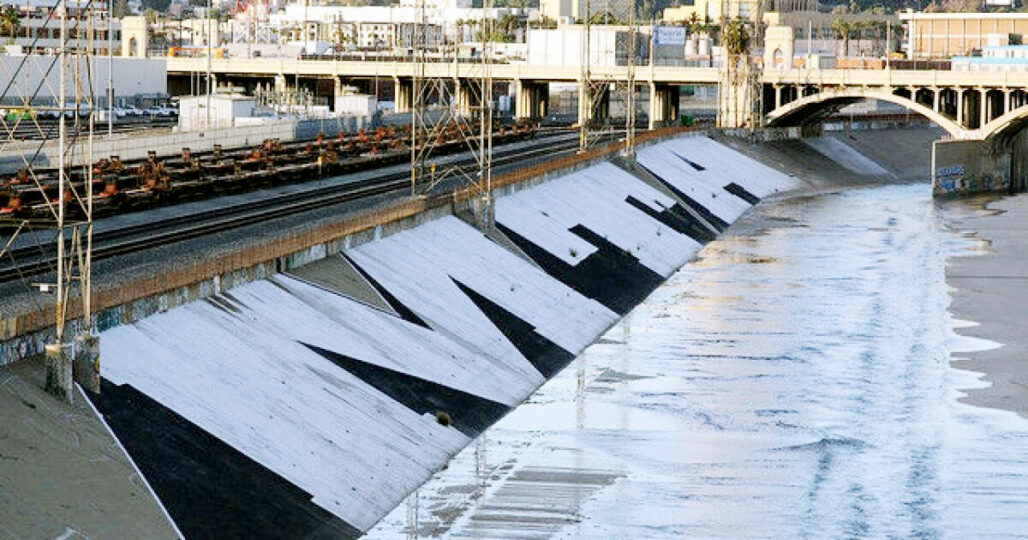
MTA (New York & Los Angeles)
MTA is legendary, with roots in both New York and Los Angeles. The crew name has taken on different meanings in different contexts, but its influence is undeniable in both East and West Coast graffiti scenes.
New York’s Influence
The New York graffiti crew version of MTA started in the late 1970s and quickly gained respect for its bold tags and relentless bombing campaigns on subway trains and city walls. Figures like Chino and Ree 2 became synonymous with a raw, uncompromising style, setting standards for generations of urban artists.
The New York MTA crew, established in the 1970s, is known for classic graffiti styles and has been home to iconic writers who helped define the aesthetic of New York graffiti during its formative years. Their work on the subway system helped establish many of the conventions that would become standard in graffiti worldwide.
Los Angeles Adaptation
In the 1980s, the Los Angeles version of MTA emerged. This group took the energy from New York and added its own LA flair—larger productions, innovative color choices, and a fearless approach to high-visibility locations. The LA chapter is known for pushing technical limits and influencing the broader West Coast scene.
The LA branch gained fame in the 1980s for bold, innovative work that helped establish Los Angeles as a major center for graffiti art. Their adaptation of East Coast styles to the West Coast context demonstrated how graffiti could evolve and adapt to different urban environments.
Bi-Coastal Legacy
Key aspects that define MTA’s legacy:
- Relentless dedication: Both versions built their reputations on volume, visibility, and risk-taking.
- Iconic members: Notable names include Chino (NY) and Ree 2 (NY), along with LA-based legends who remained anonymous while dominating freeways and rooftops.
- Enduring influence: MTA’s style—blunt lettering, aggressive placements, consistent tagging—continues to inspire emerging crews in both cities.
The presence of MTA in both cities has ensured its impact across coasts, making it one of the most referenced names when discussing influential crews in modern graffiti culture. Their bi-coastal presence helped facilitate the exchange of ideas between East and West Coast graffiti scenes, contributing to the development of a truly national graffiti culture in the United States.
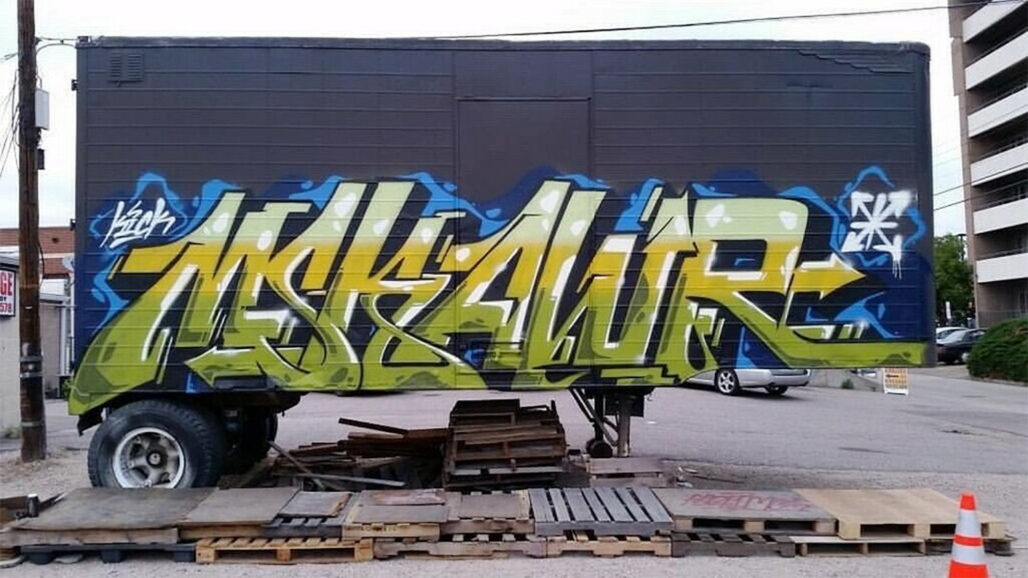
AWR, CBS, and CMS: Distinctive Approaches and Contributions
AWR Crew
AWR graffiti crew stands out for its versatility and innovation in the graffiti art scene. Known for blending styles, AWR artists push the boundaries of traditional graffiti, creating a dynamic and ever-evolving aesthetic.
Key Aspects of AWR Crew:
- Versatility and Innovation: Members of AWR are recognized for their ability to adapt and innovate. Their work spans various styles from wildstyle lettering to intricate characters, showcasing their diverse skill set.
- Pushing Boundaries: AWR continually challenges the norms of graffiti artistry. Their approach includes experimenting with different mediums, techniques, and concepts, resulting in groundbreaking pieces that redefine street art.
- Individuality Within a Collective Group: Despite being a collective, AWR values individual expression. Each member brings their unique perspective and style to the crew, contributing to a rich tapestry of creativity while maintaining a cohesive group identity.
Several key figures within AWR also belong to MSK, another influential crew. This crossover fosters a fusion of ideas and methods, further enhancing their artistic output and demonstrating the interconnected nature of the graffiti community.
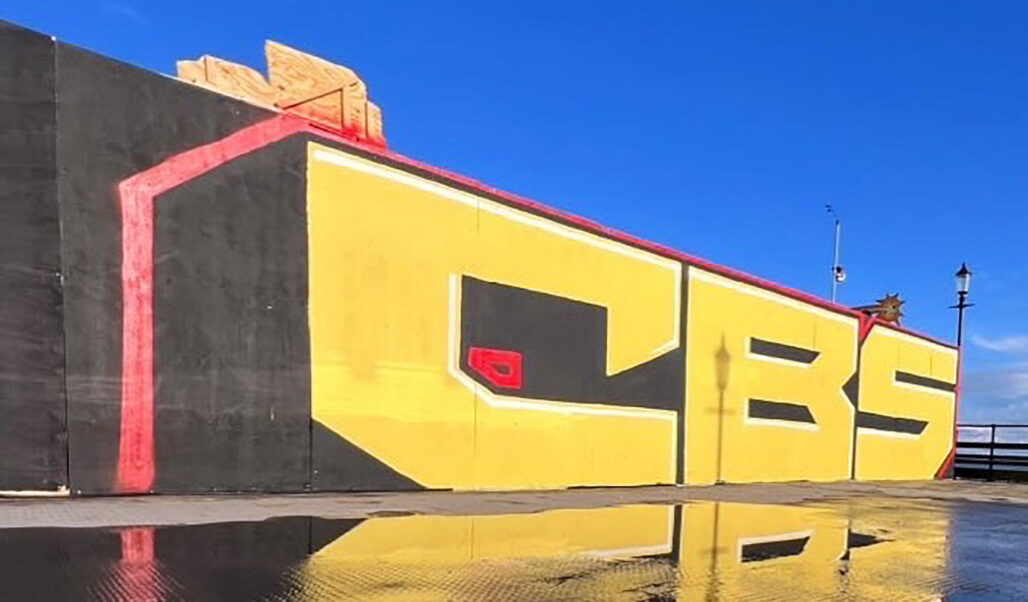
CBS Crew
CBS graffiti crew is known for its bright and colorful mural art, which combines traditional graffiti style with modern realism. This group of artists is respected by fellow graffiti artists and fans for creating some of the most expressive characters in street art, often mixing realistic features with bold and exaggerated graffiti lines.
Here are some key features of their work:
- Vivid color palettes dominate their walls, making their pieces instantly eye-catching in any urban environment.
The crew’s approach to mural creation consistently combines aspects of traditional graffiti—tagging, wildstyle lettering—with a painter’s touch for detail and shading. - Characters leap off the wall, ranging from surreal portraits to cartoonish figures, each piece telling a story or capturing an emotion.
The CBS crew is known for their ability to switch between highly realistic faces and imaginary creatures while still keeping the raw edge that defines street art. Their artwork has pushed the limits of what can be done with spray paint, inspiring both new and established artists who want to add more personality to their creations.
CMS Crew
The CMS graffiti crew stands apart through a distinctive blend of old-school graffiti aesthetics and cutting-edge contemporary techniques. This collective has built its reputation on a commitment to both tradition and innovation, creating works that pay homage to the origins of graffiti while constantly evolving their approach.
CMS pushes boundaries by fusing bold, classic letterforms with modern color schemes and effects. Their pieces often feature clean lines, dynamic movement, and a visual energy that separates them from more traditional crews.
Members of CMS excel at merging the fundamentals—sharp outlines, crisp fills, and iconic tags—with techniques like digital sketching and advanced mural tools. This hybrid approach keeps their work fresh while maintaining deep roots in street art’s history.
Precision in lettering is a hallmark of CMS. Each member brings an ability to manipulate type into visually striking compositions. Their murals often stretch across entire walls, showcasing refined control over scale, perspective, and flow.
These diverse crews—AWR, CBS, and CMS—demonstrate the rich variety of approaches that have emerged as graffiti has evolved and spread globally. Each has contributed unique elements to the art form, pushing it in new directions while maintaining connections to its historical roots. Their distinctive styles and innovative techniques have enriched the global graffiti scene, inspiring new generations of artists to find their own voices within this dynamic art form.
Artistic Innovation and Style Development
The evolution of graffiti styles and techniques is a testament to the creativity and ingenuity of artists who have continually pushed the boundaries of what’s possible with spray paint. From simple tags to elaborate murals, the technical and stylistic development of graffiti represents one of the most dynamic artistic evolutions in contemporary visual culture.
Evolution of Graffiti Techniques and Tools
Early graffiti was characterized by simple tags and throw-ups, which were quick and easy to execute. These early forms were born of necessity—artists needed to work quickly to avoid detection by authorities. However, as artists sought to distinguish themselves and make a lasting impact, they began to experiment with more complex and elaborate designs.
The tools of graffiti have evolved significantly over the decades. Early graffiti was often executed with simple spray cans and limited color palettes. The first generation of graffiti artists had to work with industrial spray paints that weren’t designed for artistic use, leading to drips, inconsistent coverage, and limited color options. As the art form gained popularity, manufacturers began developing specialized products for graffiti artists, including:
- Specialized spray nozzles (caps) that allow for different line widths and effects
- Paint formulations with better coverage, more consistent application, and faster drying times
- Expanded color palettes that give artists more creative options
- Markers and other tools that complement spray paint techniques
These technical innovations allowed artists to create more intricate and refined pieces. Crews like TATS CRU were known for their innovative use of these tools, constantly pushing the boundaries of what was possible and setting new standards for the art form.
Wildstyle: Complex Lettering and Visual Complexity
One of the most significant developments in graffiti was the emergence of wildstyle, a complex and intricate form of lettering that often featured interlocking shapes, arrows, and abstract elements. Wildstyle required a high level of skill and precision, and it became a hallmark of advanced graffiti artists.
Pioneered by artists like PHASE 2 and developed by crews like Wild Style, this approach to lettering transformed graffiti from simple signatures to complex artistic statements. The interlocking letters, arrows, and embellishments created a visual puzzle that was often indecipherable to outsiders but represented the highest level of technical achievement within the graffiti community.
Wildstyle wasn’t just about complexity for its own sake—it represented a visual language that communicated status, skill, and artistic vision. The ability to execute a clean, dynamic wildstyle piece became a marker of an artist’s technical prowess and creative vision. Crews like TATS CRU popularized this style, bringing it to walls and legal murals where artists could spend more time perfecting their technique.
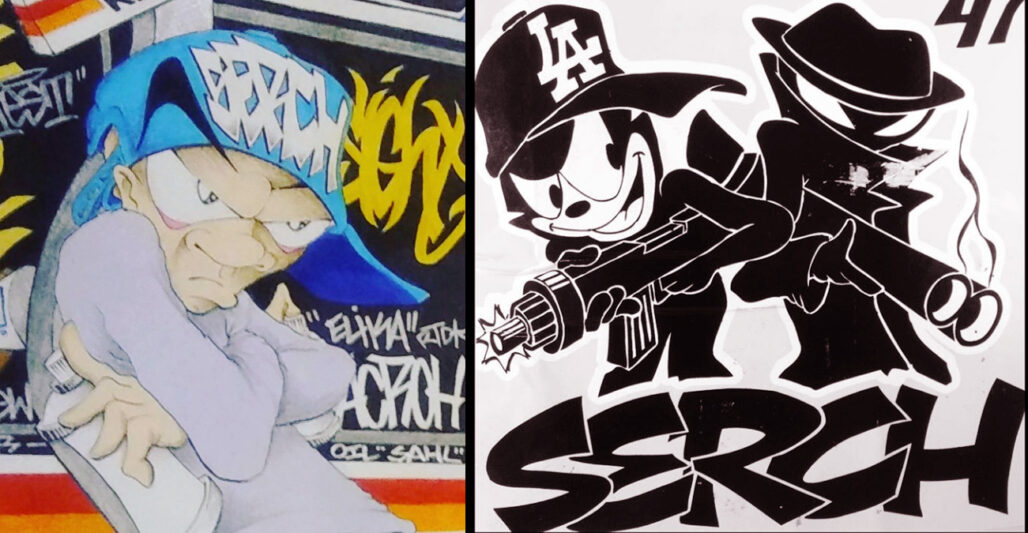
Character Development and Imagery Integration
Another important development was the use of characters and imagery in graffiti. Artists began incorporating cartoon-like characters, animals, and other visual elements into their murals, adding a new dimension to their work. This shift allowed for more elaborate storytelling and social commentary, as artists could convey complex messages through a combination of text and imagery.
Crews like CBS became known for their expressive characters, often mixing realistic features with bold and exaggerated graffiti lines. Their ability to switch between highly realistic faces and imaginary creatures while still keeping the raw edge that defines street art pushed the limits of what could be done with spray paint.
The integration of characters and imagery opened new possibilities for graffiti artists, allowing them to connect with broader audiences and express more complex ideas. It also facilitated collaborations between artists with different strengths—some specializing in letters, others in characters—creating more dynamic and visually interesting pieces.
Color Theory and Palette Evolution
The use of color in graffiti has evolved dramatically over the years. Early works were limited by the available spray paint colors, which were primarily industrial shades not intended for artistic use. As the art form developed, artists began experimenting with more sophisticated color combinations and effects.
Crews like AWR and MSK pushed the boundaries of color theory in graffiti, using contrasting colors, gradients, and highlights to create dynamic, eye-catching pieces. The strategic use of color became a way to make pieces stand out in the urban environment and express the artist’s unique style.
The evolution of color in graffiti reflects broader trends in visual culture, from the bright, pop-influenced palettes of the 1980s to the more sophisticated color theories employed by contemporary artists. Today’s graffiti artists often have formal training in color theory and design, bringing these principles to their street work.
The Fusion of Traditional Graffiti with Other Art Forms
As graffiti has gained recognition as a legitimate art form, many artists and crews have begun incorporating elements from other artistic traditions. This fusion has led to innovative approaches that push the boundaries of what graffiti can be.
The CMS crew exemplifies this trend, blending old-school graffiti aesthetics with cutting-edge contemporary techniques. Their hybrid approach keeps their work fresh while maintaining deep roots in street art’s history. By merging the fundamentals—sharp outlines, crisp fills, and iconic tags—with techniques like digital sketching and advanced mural tools, they create work that bridges different artistic worlds.
Similarly, artists from crews like MSK have moved between illegal street work and gallery exhibitions, bringing graffiti aesthetics into fine art contexts and incorporating fine art techniques into their street pieces. This cross-pollination has enriched both worlds, challenging preconceptions about what constitutes “legitimate” art.
Digital Influence and Adaptation to New Technologies
The digital revolution has had a profound impact on graffiti culture. From the use of digital design tools to plan pieces to the role of social media in documenting and sharing work, technology has transformed how graffiti is created, experienced, and preserved.
Crews like 1UP have embraced digital media, using videos and social media to document their work and reach global audiences. Their approach to documentation has changed how graffiti is shared and experienced, creating a digital presence that extends their influence far beyond the physical locations of their pieces.
Digital tools have also influenced the creative process itself. Many artists now sketch designs digitally before executing them with spray paint, allowing for more complex planning and precision. Some have incorporated digital projection techniques to transfer complex designs to walls, enabling even more intricate and ambitious pieces.
The evolution of graffiti styles and techniques reflects the dynamic, adaptive nature of the art form. From its humble beginnings as simple tags on subway cars to the sophisticated murals that now adorn cities worldwide, graffiti has continuously reinvented itself while maintaining connections to its roots. The crews at the forefront of this evolution have not just created art—they’ve pushed the boundaries of what’s possible with spray paint and public space, leaving an indelible mark on contemporary visual culture.

Cultural Impact and Mainstream Crossover
The journey of graffiti from criminalized activity to celebrated art form represents one of the most remarkable cultural transformations of the past half-century. What began as an underground movement has evolved into a global visual language that influences everything from fashion to fine art. The most famous graffiti crews have played a pivotal role in this transformation, pushing the boundaries of the art form while building bridges to mainstream culture.
Influence on Contemporary Art, Fashion, and Design
Graffiti’s influence extends far beyond city walls, permeating various aspects of visual culture and design. The aesthetic languages developed by pioneering crews have become reference points for designers, artists, and brands seeking to capture urban energy and authenticity.
In the fashion world, graffiti aesthetics have inspired collections from streetwear brands to luxury houses. The bold colors, dynamic compositions, and raw energy of graffiti have been translated into textile designs, prints, and brand identities. Crews like TATS CRU have collaborated with clothing brands, bringing their distinctive style to new mediums and audiences.
The design world has similarly embraced graffiti influences, with typography, color theory, and compositional approaches from graffiti finding their way into graphic design, product design, and architecture. The visual vocabulary developed on city walls has become part of the broader design language, influencing how we experience visual communication in various contexts.
Contemporary art has perhaps been most profoundly influenced by graffiti. Artists who began their careers in graffiti crews have transitioned to gallery and museum settings, bringing street sensibilities to fine art contexts. This crossover has challenged traditional notions of artistic value and legitimacy, forcing the art world to reckon with the creative power of work that originates outside institutional frameworks.
Transition from Streets to Galleries and Museums
The movement of graffiti from streets to galleries represents a complex and sometimes contentious evolution. Early exhibitions of graffiti art in the 1980s, such as the “New York/New Wave” show at P.S.1 Contemporary Art Center, began to legitimize the art form in institutional contexts. Artists like Jean-Michel Basquiat and Keith Haring, who had roots in street art, found success in the traditional art world, helping to bridge the gap between the streets and galleries.
For crews like TATS CRU, the transition to galleries and museums came after they had established themselves as masters of their craft on city walls. Their technical skill and artistic vision earned them recognition from art institutions that had previously dismissed graffiti as vandalism. This recognition didn’t come without complications—questions of authenticity, commercialization, and the politics of institutional validation continue to surround graffiti’s presence in museums and galleries.
The institutional acceptance of graffiti has created new opportunities for artists while raising important questions about who gets to define art and determine its value. The most successful crews have navigated this terrain carefully, maintaining their street credibility while embracing opportunities to share their work with broader audiences through institutional channels.
Commercial Collaborations and Brand Partnerships
As graffiti gained cultural currency, brands began to recognize its potential to connect with young, urban consumers. Pioneering crews found themselves approached by companies seeking to tap into the authenticity and energy of street culture.
TATS CRU exemplifies this evolution, transitioning from illegal subway paintings to commercial projects for major brands like Coca-Cola and Sony. Their ability to maintain artistic integrity while working within commercial contexts has made them sought-after collaborators for brands looking to establish street credibility.
These collaborations have taken various forms:
- Commissioned murals for retail spaces and events
- Design work for product packaging and advertising
- Limited edition products featuring graffiti artwork
- Brand identity development informed by graffiti aesthetics
For the artists involved, these partnerships offer financial stability and broader exposure, though they also present challenges in balancing commercial demands with artistic vision. The most successful collaborations occur when brands respect the artists’ creative autonomy and cultural significance, rather than simply appropriating graffiti aesthetics without meaningful engagement with the culture.
Documentation through Photography, Film, and Social Media
Documentation has played a crucial role in graffiti’s cultural impact, preserving ephemeral works and sharing them with global audiences. In the early days of graffiti, photographers like Martha Cooper and Henry Chalfant documented the subway art of New York, creating an invaluable archive of works that would otherwise have been lost to time. Their books, such as “Subway Art,” became bibles for aspiring graffiti artists worldwide, spreading styles and techniques far beyond their origins.
Films like “Style Wars” and “Wild Style” further documented and disseminated graffiti culture, introducing it to audiences who might never have encountered it otherwise. These documentaries not only preserved the work of pioneering crews but also captured the cultural context in which graffiti emerged, helping viewers understand its significance as more than just visual expression.
In the digital age, social media has transformed how graffiti is documented and shared. Crews like 1UP have embraced these platforms, using them to document their work and reach global audiences. Instagram, in particular, has become a vital platform for graffiti artists, allowing them to share their work instantly with followers around the world. This digital presence has changed the nature of fame and recognition in graffiti culture, creating new pathways to visibility that don’t depend on traditional gatekeepers.
Educational Initiatives and Community Engagement
Many established graffiti crews have recognized the importance of education and community engagement in sustaining and evolving the art form. By sharing their knowledge and skills with younger generations, they ensure that graffiti continues to thrive while addressing some of the social issues that gave rise to it.
TATS CRU has been particularly active in educational outreach, running workshops, mentoring emerging artists, and helping local organizations harness graffiti as a tool for empowerment. Their efforts break down the myth that street art only belongs outside the law, demonstrating how it can be a positive force for community expression and development.
These educational initiatives take various forms:
- Workshops teaching technical skills and artistic approaches
- Mentorship programs for young artists
- Community mural projects that involve local residents
- School programs that use graffiti as a tool for engagement and expression
Through these efforts, established crews give back to their communities while helping to legitimize graffiti as a valuable form of cultural expression. They create pathways for young people to channel creative energy in constructive ways, potentially transforming lives through art.
The Duality of Fame and Anonymity in Graffiti Culture
Graffiti occupies a unique space between fame and anonymity. Most crews use public names, not for privacy alone, but to cultivate myth. TATS CRU members are recognizable as BIO, BG 183, Nicer, and so on, becoming fixtures in the lore of New York street culture. Similarly, members of crews like MSK have become well-known figures in the art world, with their work appearing in galleries and museums under their graffiti aliases.
This duality—being publicly celebrated without sacrificing individual privacy—has fueled the intrigue and, paradoxically, the fame of many graffiti crews. It allows artists to move between different worlds, maintaining street credibility while also engaging with mainstream institutions and opportunities.
For crews like 1UP, anonymity remains a practical necessity due to the illegal nature of much of their work. Yet this anonymity also contributes to their mystique, creating a collective identity that transcends individual personalities. Their approach represents a different model of fame—one based on collective achievement rather than individual celebrity.
The cultural impact of graffiti crews extends far beyond the specific pieces they created, shaping how subsequent generations understand concepts of public space, artistic expression, and urban identity. By pushing boundaries, building bridges to mainstream culture, and maintaining connections to their communities, these crews have transformed graffiti from a marginalized practice to a globally recognized art form with profound cultural significance.
Defining “Fame” in Graffiti Culture
The concept of “fame” in graffiti culture is multifaceted and often differs significantly from mainstream notions of celebrity. Within this unique subculture, recognition is earned through a complex interplay of visibility, technical skill, stylistic innovation, and respect from peers. Understanding what makes a graffiti crew “famous” requires examining the various metrics by which reputation is built and maintained in this dynamic art form.
Metrics of Recognition: Visibility, Influence, and Respect
In the world of graffiti, visibility has traditionally been a primary measure of fame. The more an artist or crew’s work appears throughout a city—particularly in high-risk, high-visibility locations—the more recognition they receive. This principle dates back to the subway era in New York, when artists sought to have their work “run” on as many train lines as possible, maximizing the number of people who would see their pieces.
For crews like 1UP, this emphasis on visibility remains central to their approach. Their work appears in prominent locations across multiple cities, often in places that seem impossible to access. This ubiquity creates a powerful impression of omnipresence, contributing significantly to their legendary status.
Beyond mere quantity, the quality and innovation of a crew’s work plays a crucial role in establishing fame. Technical skill, stylistic originality, and artistic vision all contribute to a crew’s reputation. MSK’s roster of artists is renowned for pushing the boundaries of what’s possible with spray paint, earning respect for their technical mastery and creative innovation.
Perhaps most importantly, fame in graffiti culture is measured by respect from peers. The recognition of other writers—particularly those who are themselves respected—carries tremendous weight. This internal validation often matters more than mainstream recognition, as it comes from those who truly understand the challenges and nuances of the art form.
The Role of Documentation and Media Exposure
While graffiti itself is often ephemeral, documentation has played a crucial role in establishing and maintaining the fame of influential crews. From the early photographs of Martha Cooper and Henry Chalfant to today’s Instagram accounts and YouTube channels, media has preserved and disseminated the work of graffiti artists, extending their influence far beyond the physical locations of their pieces.
TATS CRU’s media exposure in documentaries, news outlets, and exhibitions has contributed significantly to their global recognition. Their work has been featured in films, books, and magazines, introducing it to audiences who might never have encountered it on the streets of the Bronx.
For contemporary crews like 1UP, social media has become a powerful tool for building fame. Their carefully produced videos documenting daring missions have gone viral, reaching millions of viewers worldwide. This digital presence has created new pathways to recognition that weren’t available to earlier generations of graffiti artists.
Internal Recognition vs. Mainstream Acceptance
Fame in graffiti culture exists along a spectrum from underground respect to mainstream acceptance. Some crews prioritize recognition within the graffiti community, valuing the respect of peers over broader public awareness. Others have embraced opportunities to share their work with mainstream audiences through galleries, commercial collaborations, and media appearances.
TATS CRU exemplifies the journey from underground fame to mainstream recognition. Beginning as subway writers respected primarily within the graffiti community, they evolved into internationally recognized artists whose work appears in museums, advertisements, and public art installations. This transition required navigating complex questions of authenticity and commercialization while maintaining connections to their roots.
For crews like MSK, fame has come through members who have successfully bridged different worlds, exhibiting in prestigious galleries while maintaining street credibility. Artists like REVOK and RIME have brought graffiti aesthetics to fine art contexts, earning recognition from both traditional art institutions and the graffiti community.
Longevity and Adaptation to Changing Times
Perhaps the most telling measure of fame in graffiti culture is longevity—the ability to remain relevant and influential as the art form evolves. The most famous crews have demonstrated remarkable adaptability, adjusting to changing circumstances while maintaining their core identity and values.
TATS CRU’s evolution from illegal subway painting to legal murals and commercial work represents a successful adaptation to the changing landscape of graffiti culture. As anti-graffiti efforts made subway painting increasingly difficult, they found new canvases and opportunities, ensuring their continued influence and relevance.
Similarly, crews like MSK have embraced new technologies and contexts while remaining true to the fundamental principles of graffiti. Their ability to evolve with the times while honoring tradition has cemented their place in the pantheon of famous graffiti crews.
Global Reach and Cross-Cultural Impact
In today’s interconnected world, the fame of graffiti crews increasingly depends on their global reach and cross-cultural impact. The most renowned crews have transcended their local origins to influence artists and scenes worldwide.
1UP’s international presence—with work appearing across multiple continents—exemplifies this global approach to graffiti. Their consistent style and high-visibility pieces have made them recognizable to graffiti enthusiasts around the world, regardless of language or cultural barriers.
TATS CRU’s international projects in Japan, Europe, and Latin America have similarly extended their influence beyond national boundaries. Their work has inspired artists in diverse cultural contexts, contributing to the global development of graffiti as an art form.
The question of “Who is the most famous graffiti crew?” remains subjective, as fame in this context depends on numerous factors and perspectives. What’s clear is that crews like TATS CRU, MSK, 1UP, and others have achieved legendary status through their technical skill, stylistic innovation, cultural impact, and ability to adapt to changing times. Their fame transcends simple metrics, reflecting the complex interplay of visibility, respect, influence, and legacy that defines recognition in graffiti culture.
The Future of Graffiti Crews
As graffiti continues to evolve in the 21st century, the role and nature of crews are transforming alongside technological, social, and artistic developments. The future of graffiti crews will be shaped by their ability to adapt to new challenges and opportunities while maintaining the core values that have defined the art form since its inception.
Digital Evolution and New Platforms
The digital revolution has already transformed how graffiti is created, shared, and experienced. Social media platforms have become virtual galleries where crews showcase their work to global audiences. This trend will likely accelerate, with crews increasingly developing sophisticated digital presences that complement their physical work.
Virtual and augmented reality technologies offer intriguing possibilities for graffiti crews. These technologies could allow artists to create immersive, interactive experiences that transcend the limitations of physical space. Imagine walking through a city and using an AR app to see virtual graffiti pieces overlaid on buildings, or experiencing a VR environment entirely designed and painted by a famous crew.
NFTs (Non-Fungible Tokens) and blockchain technology have begun to impact how digital art is valued and collected. Some graffiti artists have already entered this space, creating digital works that can be owned and traded. For crews, this represents a potential new revenue stream and way to reach collectors, though questions remain about how these technologies align with graffiti’s traditional emphasis on public accessibility.
Legal Walls and Sanctioned Spaces
The proliferation of legal walls and sanctioned spaces for graffiti represents both an opportunity and a challenge for crews. These spaces provide a chance to create more elaborate, time-intensive pieces without the risk of arrest, but they also remove some of the transgressive energy that has historically fueled the art form.
Forward-thinking cities are increasingly recognizing the cultural and economic value of street art, designating areas where graffiti is permitted or even encouraged. Crews that can navigate these sanctioned spaces while maintaining their artistic integrity will likely play a significant role in shaping how graffiti is integrated into urban planning and public art initiatives.
The challenge for crews will be balancing these legitimate opportunities with the raw, uncompromising spirit that defines graffiti. The most successful will likely maintain a presence in both worlds, creating ambitious works in legal spaces while continuing to push boundaries in unsanctioned contexts.
Emerging Crews and Next-Generation Artists
The future of graffiti will be shaped by emerging crews and next-generation artists who bring fresh perspectives and approaches to the art form. These newcomers build on the foundations laid by pioneering crews while incorporating influences from digital culture, contemporary art, and global visual traditions.
Young artists today have unprecedented access to information about graffiti history and techniques, thanks to the internet and social media. Thanks to the Internet and social media, young democratization of knowledge has accelerated the technical development of emerging artists, al took earlier generations years to develop.
The globalization of graffiti culture means that innovative new crews are emerging from regions beyond the traditional centers of New York, Los Angeles, and European capitals. Cities in South America, Asia, and Africa are developing vibrant graffiti scenes with distinctive local characteristics, contributing to the global evolution of the art form.
Preservation Efforts and Historical Documentation
As the pioneers of graffiti age, increasing attention is being paid to preserving and documenting the history of the art form. Archives, museums, and research institutions are collecting photographs, sketches, and oral histories from influential crews, ensuring that their contributions are not lost to time.
Digital archives and databases are making historical graffiti more accessible to researchers and enthusiasts. Projects like the Google Arts & Culture Street Art collection preserve works that might otherwise be lost to weather, development, or removal campaigns.
The crews themselves are increasingly conscious of their historical significance, with many veteran artists documenting their own histories through books, films, and exhibitions. This self-documentation ensures that the stories of influential crews are told from the perspective of those who lived them, rather than being interpreted solely by outside observers.
The Continuing Tension Between Rebellion and Acceptance
The fundamental tension in graffiti culture—between its origins as an act of rebellion and its increasing acceptance by mainstream institutions—will continue to shape the evolution of crews. This tension is not simply a binary opposition but a complex spectrum that crews navigate according to their own values and goals.
Some crews will maintain a primarily underground presence, prioritizing the transgressive aspects of graffiti and rejecting institutional validation. Others will embrace opportunities to reach broader audiences through galleries, commercial collaborations, and public art commissions, while attempting to maintain their artistic integrity.
Most will likely occupy a middle ground, moving between different contexts and approaches depending on the specific project or moment. This flexibility has been a hallmark of the most enduring crews, allowing them to evolve with the times while remaining true to their core identity.
The future of graffiti crews will be defined by this ongoing negotiation between rebellion and acceptance, illegality and legitimacy, underground and mainstream. The most influential crews will be those that can navigate these tensions creatively, finding new ways to push boundaries while building on the rich legacy of those who came before them.
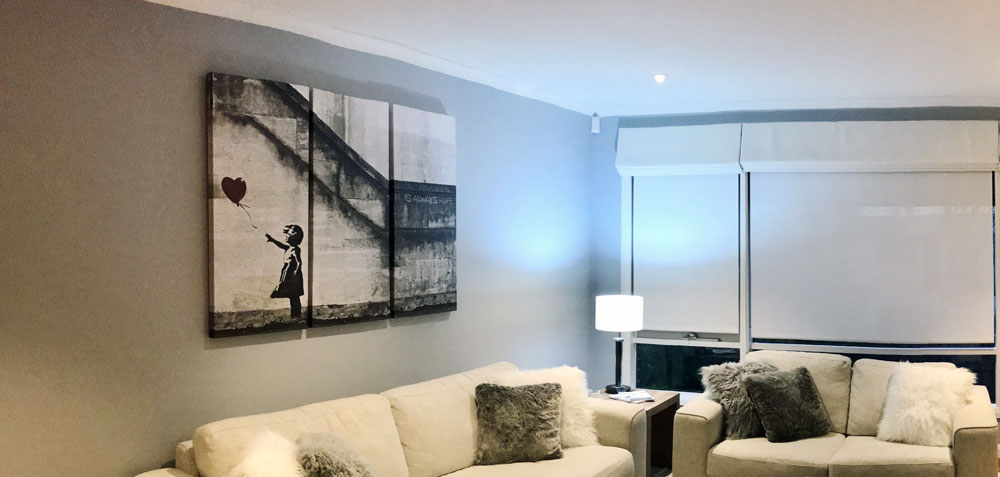
Writing Their Own Rules: How Graffiti Crews Redefined Art, Space, and Community
The journey of graffiti from criminalized vandalism to celebrated art form represents one of the most remarkable cultural transformations of our time. At the heart of this evolution are the graffiti crews—collectives of artists who have pushed boundaries, developed innovative techniques, and transformed urban landscapes around the world. Their story is not just about art; it’s about community, identity, resistance, and the power of collective creativity to reshape our visual culture.
The most famous graffiti crews—from TATS CRU and Wild Style in New York to MSK in Los Angeles and 1UP in Berlin—have each contributed unique elements to the development of this global art form. They’ve demonstrated how collaboration can elevate individual talent, how tradition can be honored while embracing innovation, and how art born from the margins can eventually transform the mainstream.
What began in New York City’s tunnels and train yards has spread to every corner of the globe, adapting to local contexts while maintaining connections to its roots. The technical innovations, stylistic developments, and cultural impacts of pioneering crews have created a rich artistic tradition that continues to evolve and inspire new generations of artists.
The question of “Who is the most famous graffiti crew?” ultimately misses the point. Fame in graffiti culture is measured differently than in mainstream contexts—by respect from peers, technical innovation, cultural impact, and the ability to remain relevant as the art form evolves. By these measures, crews like TATS CRU, MSK, 1UP, MTA, AWR, CBS, and CMS have all achieved legendary status in their own ways.
What’s clear is that these crews have collectively transformed our visual landscape and cultural understanding. They’ve challenged conventional notions of art and public space, forcing us to reconsider who gets to create and where creation belongs. They’ve demonstrated how art can emerge from marginalized communities to influence global visual culture, and how collective creativity can transcend individual expression.
As graffiti continues to evolve in the digital age, with new technologies, contexts, and challenges, the legacy of these pioneering crews provides a foundation for future innovation. The tension between rebellion and acceptance, illegality and legitimacy, underground and mainstream will continue to energize the art form, pushing it in new directions while maintaining connections to its revolutionary origins.
The walls of our cities have become canvases for a global conversation about identity, power, beauty, and belonging. The graffiti crews who paint these walls don’t just create art; they create community, challenge boundaries, and transform how we see and experience our shared urban spaces. Their collective vision has permanently altered our visual culture, proving that sometimes the most profound artistic revolutions begin not in galleries or museums, but on the streets where we live.
In every paint stroke and every mural, these legendary crews have etched more than their names. They’ve charted a path for countless artists to follow, set new standards for what graffiti can achieve, and brought affirmation both to the art form and to the communities where it is born. Their influence shows that sometimes the most vibrant galleries are open to the sky, the best artists paint for anyone who passes by, and the greatest crews never forget the streets that made them.
